Sweet Corn
IPM Program personnel have re-established the black light trap network in New Jersey. With continued below normal temperatures, no corn earworm (CEW) or European corn borer (ECB) moths have been captured. As numbers increase, look for population maps of ECB, CEW, brown marmorated stink bug (BMSB) and CEW catches from pheromone traps in this weekly publication. The resulting full-state maps will include interpretive information.
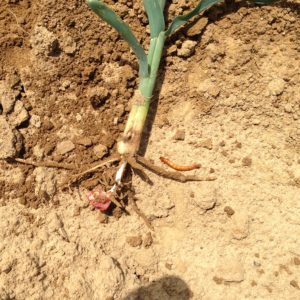 With cold, damp conditions dramatically slowing down the growth of seedling corn, wire worms (see photo at left) have the potential to be more of a nuisance than usual. While we don’t often see this problem in sweet corn, it does occasionally happen when wire worms are present and the corn cannot grow quickly enough to become less susceptible to injury. Look for clusters of seedlings that exhibit wilted inner leaves. Wire worms often are discovered by digging up these affected seedlings. The incidence of this damage may be minor, but if growers determine that a field must be replanted, it may be necessary to include an in-furrow soil insecticide targeting this pest.
With cold, damp conditions dramatically slowing down the growth of seedling corn, wire worms (see photo at left) have the potential to be more of a nuisance than usual. While we don’t often see this problem in sweet corn, it does occasionally happen when wire worms are present and the corn cannot grow quickly enough to become less susceptible to injury. Look for clusters of seedlings that exhibit wilted inner leaves. Wire worms often are discovered by digging up these affected seedlings. The incidence of this damage may be minor, but if growers determine that a field must be replanted, it may be necessary to include an in-furrow soil insecticide targeting this pest.

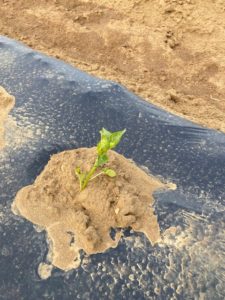 base of the plant and enough to seal the hole around the plant. This works best for transplants with tall stems – tomatoes, peppers, eggplants and cole crops.
base of the plant and enough to seal the hole around the plant. This works best for transplants with tall stems – tomatoes, peppers, eggplants and cole crops.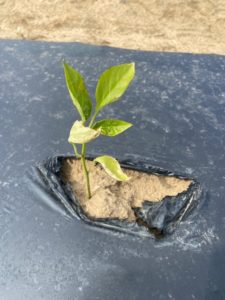 and tied.
and tied.
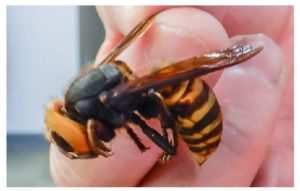
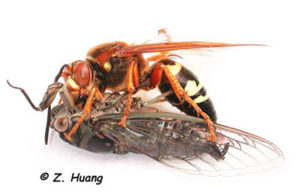 wasps found throughout the U.S. and burrow holes in the soil. Even with their large size, dangerous appearance and “dive-bombing” habit, adult Cicada killer wasps rarely come in contact with people and it is rare they will sting. The males of this species will make “dive-bombing” flight patterns, but do not have a stinger and an attack would not result in a sting. The female’s tubular egg-laying structure on the rear end can function as a very weak stinger. Her mild sting is similar to a slight pin scratch and is not considered by most people to be painful. Rutgers Cooperative Extension has more information on the
wasps found throughout the U.S. and burrow holes in the soil. Even with their large size, dangerous appearance and “dive-bombing” habit, adult Cicada killer wasps rarely come in contact with people and it is rare they will sting. The males of this species will make “dive-bombing” flight patterns, but do not have a stinger and an attack would not result in a sting. The female’s tubular egg-laying structure on the rear end can function as a very weak stinger. Her mild sting is similar to a slight pin scratch and is not considered by most people to be painful. Rutgers Cooperative Extension has more information on the 